Classification of precious stones. Varieties of precious stones in colors. How to identify a real stone among the many fakes, imitations and hacks?
Contents of
- What stones, gems and minerals are precious precious stones: the classification of precious stones
- Black gemstones: name, description, photo
- White gemstones: name, description, photo
- Blue gemstones: name, description, photo
- Blueprecious stones: name, description, photo
- Red gemstones: name, description, photo
- Pink gemstones: name, description, photo
- Green gemstones: name, description, photo
- Bordeaux gemstones: name, description, photo
- How to distinguish a natural stone from a fake, from a glass in ornaments?
- Precious stones: Video
- How to distinguish a precious stone from a natural: Video
Today, experts in jewelry have much more difficult than their predecessors. If a few decades ago, an authentic gem could easily be distinguished from a fake, even visually, then in the world of modern technology and progress it is almost impossible to do it by sight.
In addition to all the hacks of glass, imitators of expensive stones from cheaper minerals, today a new product appeared on the jewelry market - a stone grown in laboratory conditions. Such a creation of human hands visually looks no worse than a mineral, created by nature for many decades, but it is several times cheaper. How can you distinguish a genuine natural stone from a fake or an unnatural stone? What precious minerals exist?
Which stones, gems and minerals are precious precious stones: classification of precious stones
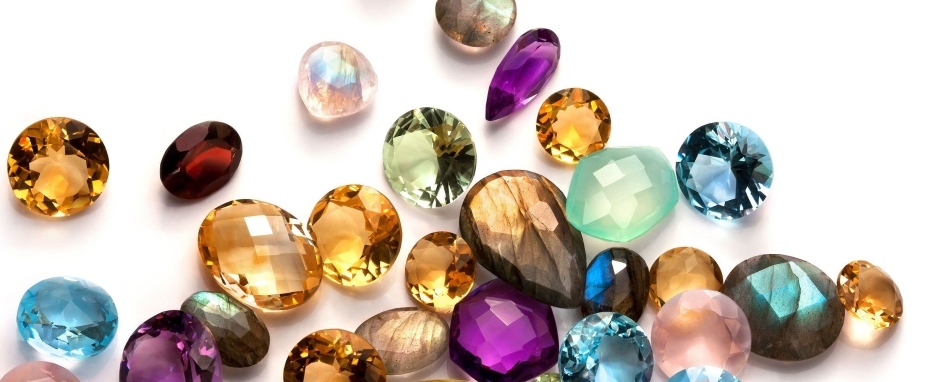 Classification of gems
Classification of gems - It will be difficult for a beginner to understand complex classifications of precious stones. The fact is that for today there are quite a lot of them: Sobolevsky, Kluge, Kiyvlenko, Gurich, Bauer-Fersman, etc.
- In order not to dwell on each of the classifications, we will try to make one, generalizing, excluding facing stones:
- The first category of stones is precious stones( the most expensive, valuable stones).This category of minerals includes diamond( diamond), ruby, emerald, sapphire, alexandrite, etc.
- The second category of stones is semiprecious stones( more common, but not less valuable).A similar category of minerals are: amethyst, aquamarine, almadine, apatite, garnet, rock crystal, opal, quartz, topaz, tourmaline, zircon, chrysolite, etc.
- The third category is jewelry and ornamental stones. These include: agate, turquoise, amber, cat's eye, moonstone, lapis lazuli, malachite, jasper, tiger's eye.
- Some classifications group stones into similar categories, however, they also subdivide minerals into classes. Class indicates the strength of the stone, its high cost and beauty.
Black gemstones: name, description, photo
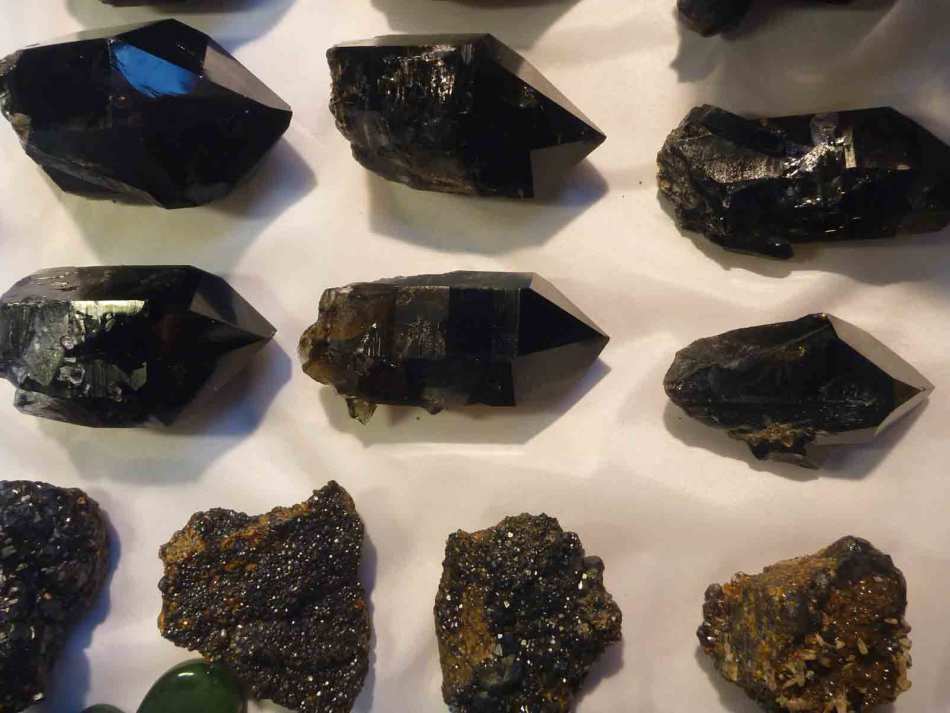 Black gems
Black gems In nature, there are so many minerals that stand out in their black color. Some of them are so rare that it is almost impossible to find any information about them. In many cases, the name "black" stone can be considered relative, since in fact the mineral has a lighter or not monochromatic color. Here are the most common black stones in jewelry:
Precious stones
Black diamond or carbonado
Black Diamond is the greatest rarity and value in jewelry. However, it should be noted that it does not reach the decorations, as its cutting and processing is very difficult - it can be done only with the help of the same stone. In the jewelry annals there is only a handful of such stones, the most expensive of which was estimated at $ 1.7 million. The other two became known under the names "Black Star of Africa" and "Korloff Noir".
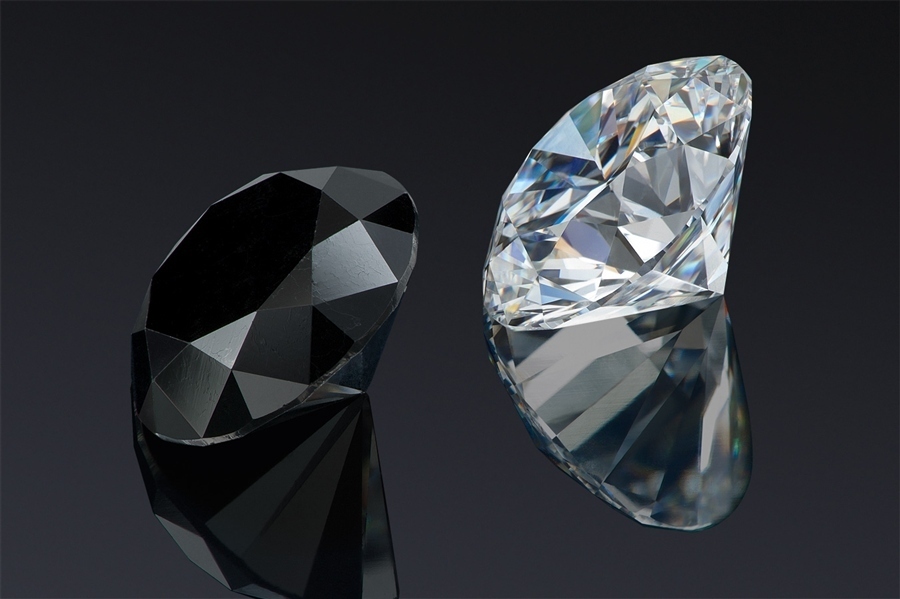 Black diamond
Black diamond Black sapphire
This black sapphire does not exist in nature. Virtually all black sapphires are the work of scientists. They are obtained by processing blue sapphires. The same few black sapphires, which have a natural origin, in fact, it is difficult to call black, since their color is more approximate to the color of the sky at night. The most famous black sapphire is the "Black Star of Queensland" worth 100 million dollars.
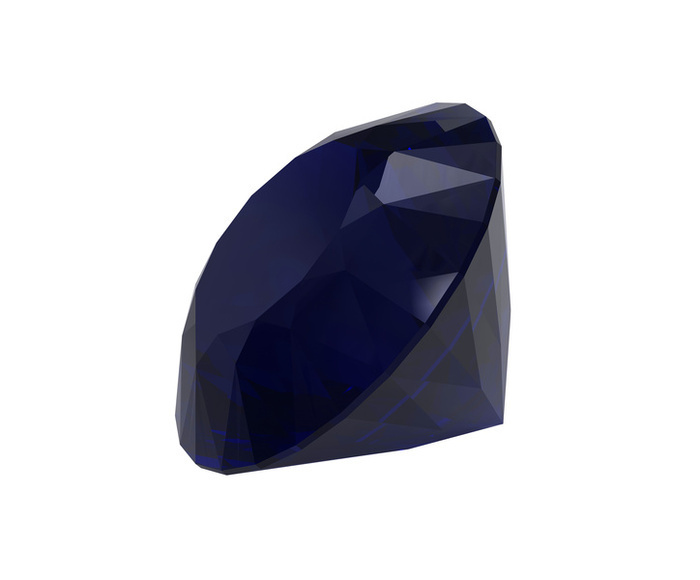 Black sapphire
Black sapphire Black pearls
A similar kind of pearls is also difficult to consider truly black, as its darkness is softened by the pearl of the pearl. However, the cost of such a curiosity still remains quite high. The rarest specimens of black pearls are collected in Tahiti in the corresponding museum.
 Black pearl
Black pearl Black opal
This kind of opal is considered one of the most expensive and valuable breeds. Most often this mineral is found in deposits located in the least developed countries of the world, which causes numerous human losses during its extraction.
 Black Opal
Black Opal Black Spinel
Black Spinel is one of the most inexpensive types of black gemstones. Its cheapness is easily explained by the fragility of the stone and the complexity of its processing. Most often spinel is used in needlework or jewelry in the form of cabochons.
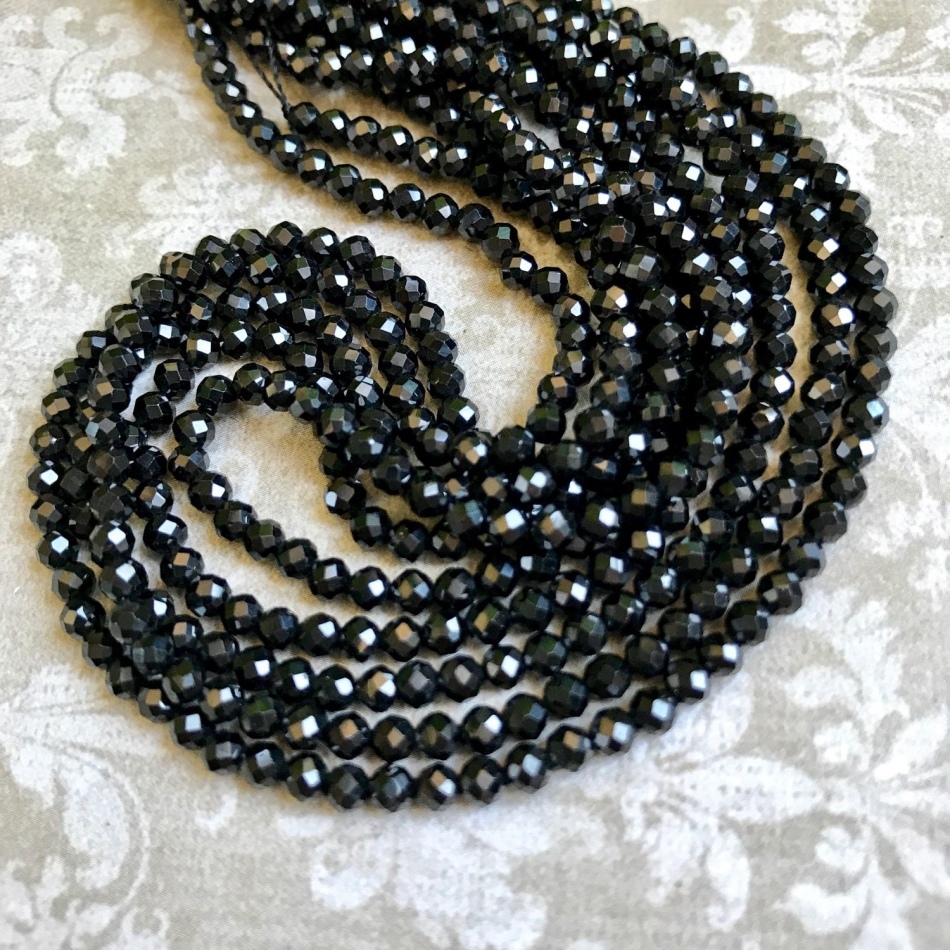 Black Spinel
Black Spinel Semi-precious stones
Black quartz or morion is the only representative of semiprecious stones of black color. Today this mineral is most often used in costume jewelry. Outwardly it has an opaque or barely transparent surface.
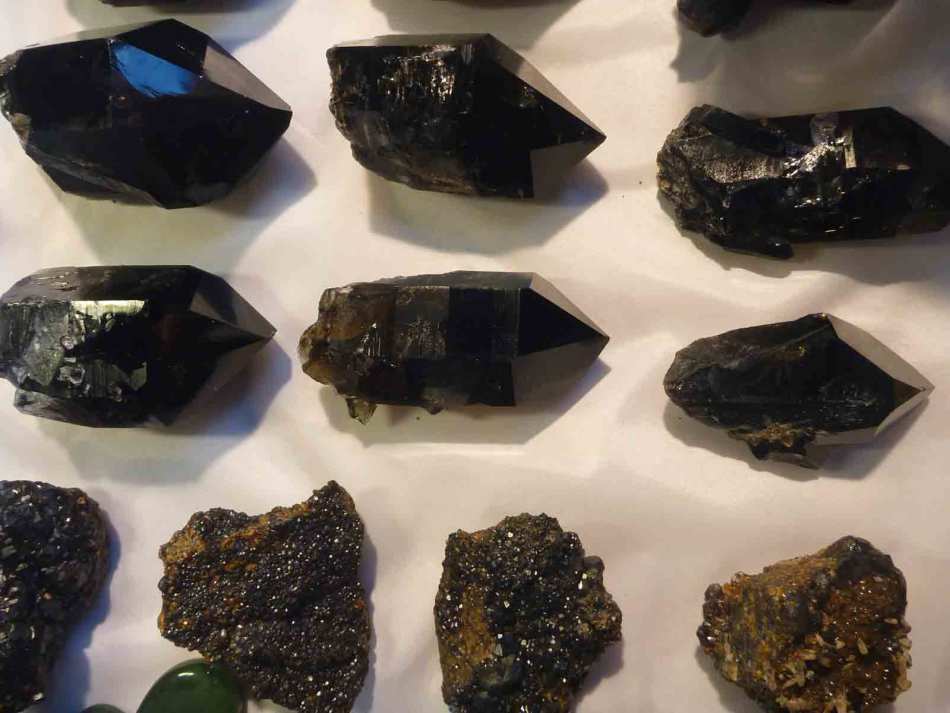 Black quartz or morion
Black quartz or morion Jewelry and ornamental stones
Black agate
In fact, black agate does not exist in nature. You can find only minerals of dark-coal color. Saturated black color can only be achieved by the technological processing of this stone.
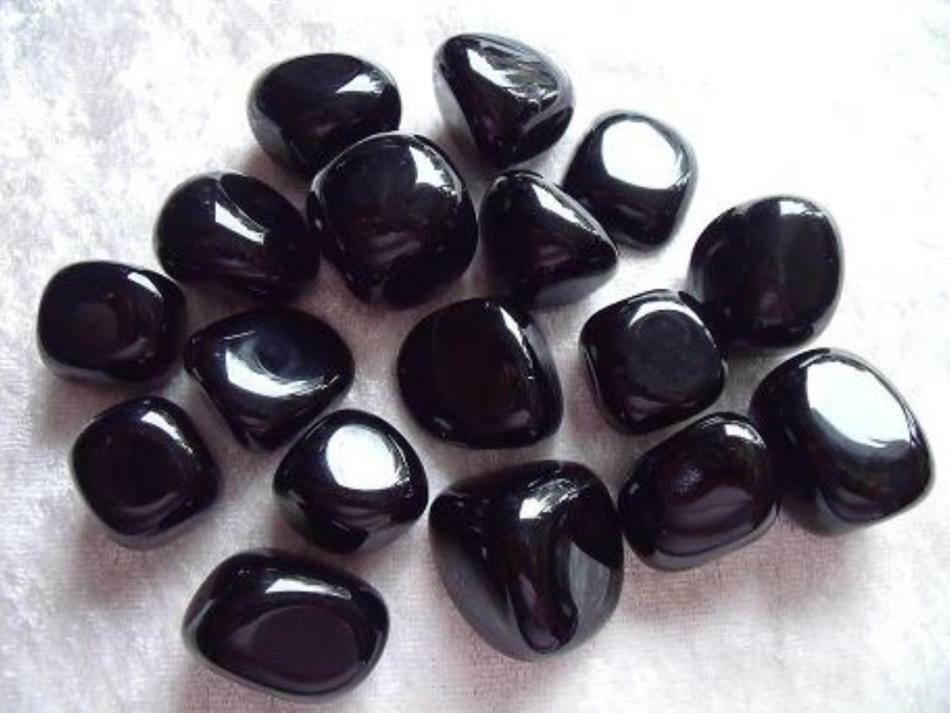 Black agate
Black agate Other representatives of jewelry and ornamental stones of black color are: black onyx, obsidian, black jasper or gagat, hematite, argillite and hypersthene.
White gemstones: name, description, photo
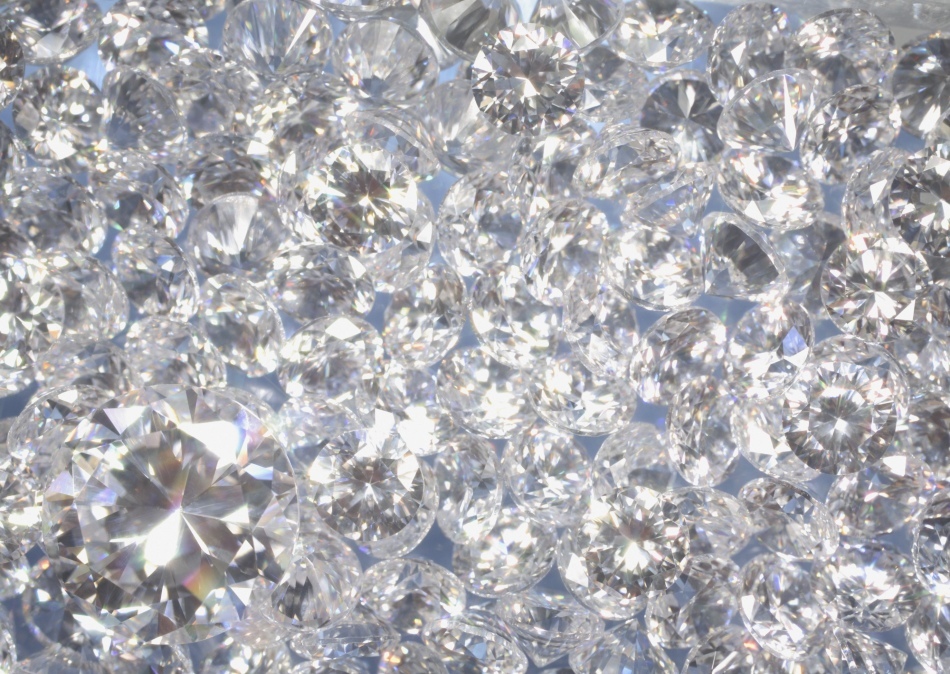 White gems
White gems White or transparent by nature minerals are considered the most expensive and valuable stones in the art of jewelry. White gemstones include:
Diamond or diamond
It is the transparent diamond or the already cut part of it( diamond) that first come to mind to any person( especially women) when mentioning white gems. Indeed, this mineral is considered one of the most sought-after. Its high cost is easily explained by the few deposits of this mineral in the earth. In this case, only a small fraction of all the diamonds mined is suitable for cutting.
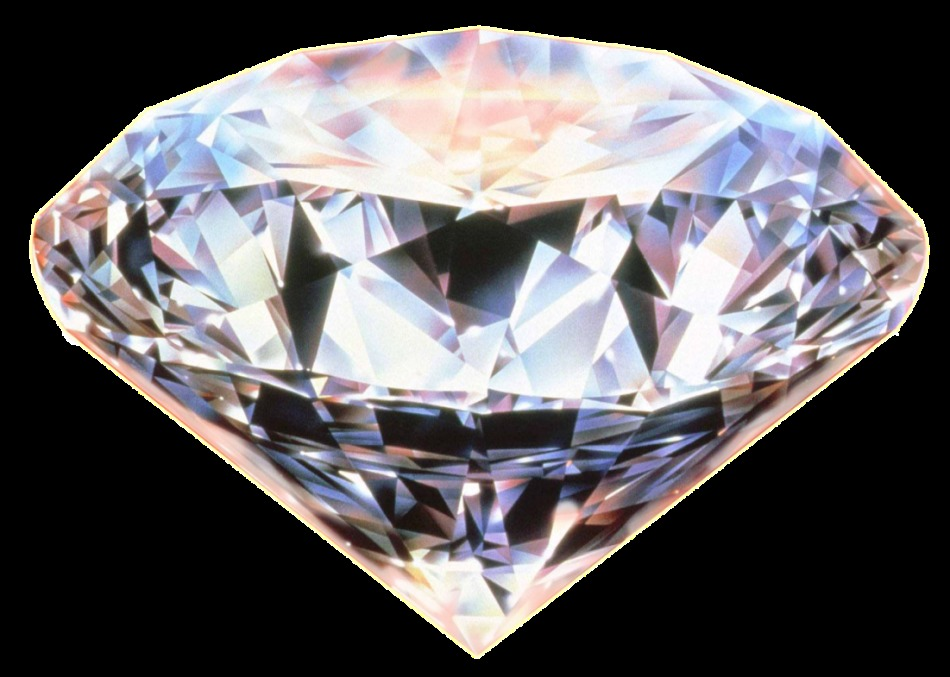 Diamond
Diamond Transparent spinel
Unlike its black twin brother, white spinel is a fairly expensive stone with a high strength. Perfect purity and the fact that there are no impurities in this mineral makes it even more valuable. White spinel is most often used in luxury jewelry.
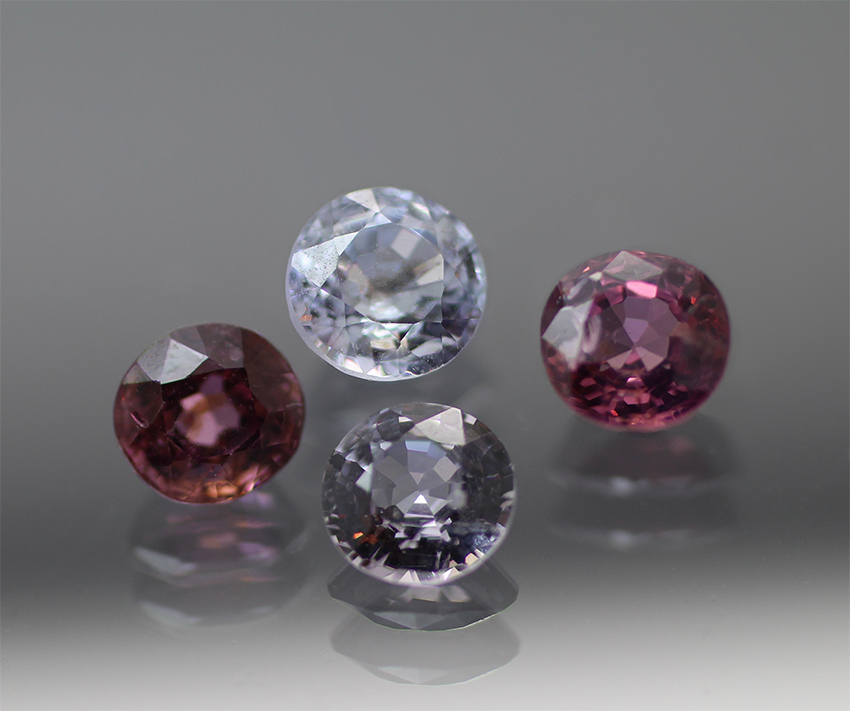 White Spinel
White Spinel Colorless Topaz
With the naked eye, this mineral is easily confused with a diamond. However, with a close examination, it is possible to detect differences. In the jewelry business, it is customary to frame colorless topaz in noble white metals - gold, platinum.
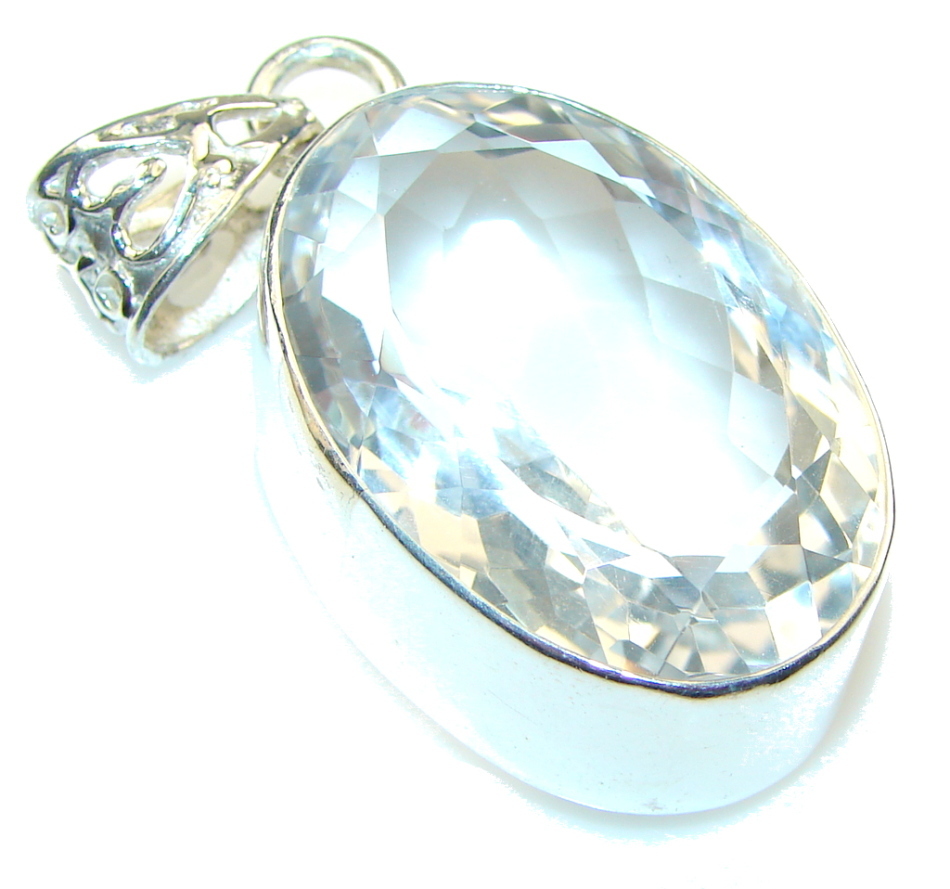 White Topaz
White Topaz Goshenit or colorless beryl
Goshenit is also very similar to diamond, but its radiance can be called more chilling, restrained.
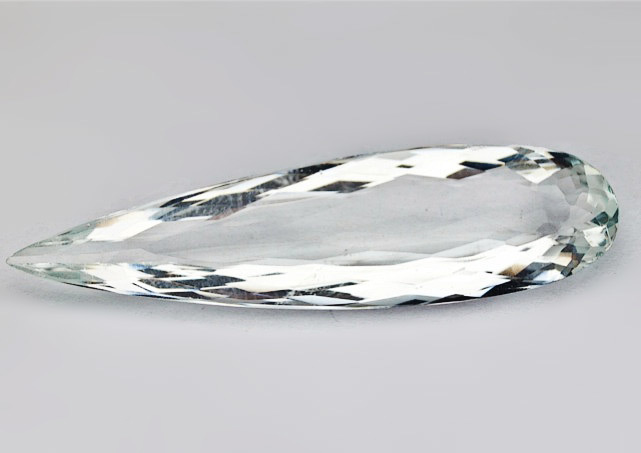 Goshenit
Goshenit Pearls
White pearls have always managed to captivate their warmth and tenderness of the fair sex. Strangely enough, but in nature pearls rarely have a round shape( such representatives are highly appreciated) - they are often oblong, uneven. There is a pearl and one more feature - the period of life. If ordinary minerals will delight the eye with their beauty forever, then the pearl can "go out" at any time. The lifetime of this mineral does not exceed 300 years.
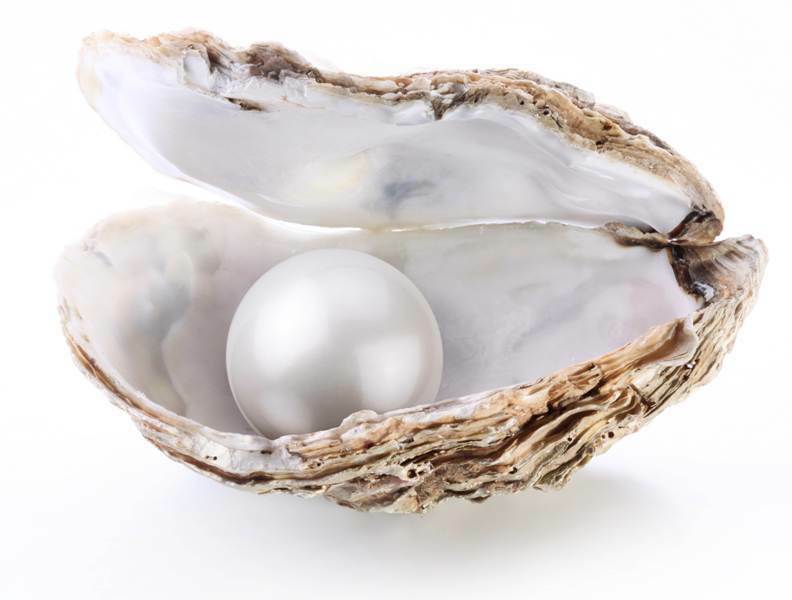 White pearls
White pearls Achroit or white tourmaline
This breed is very rare, since its deposits are located only at one point on the map. In the form of ornaments, achroit is rare. Such pleasure can be ordered only in several jewelry shops of the world.
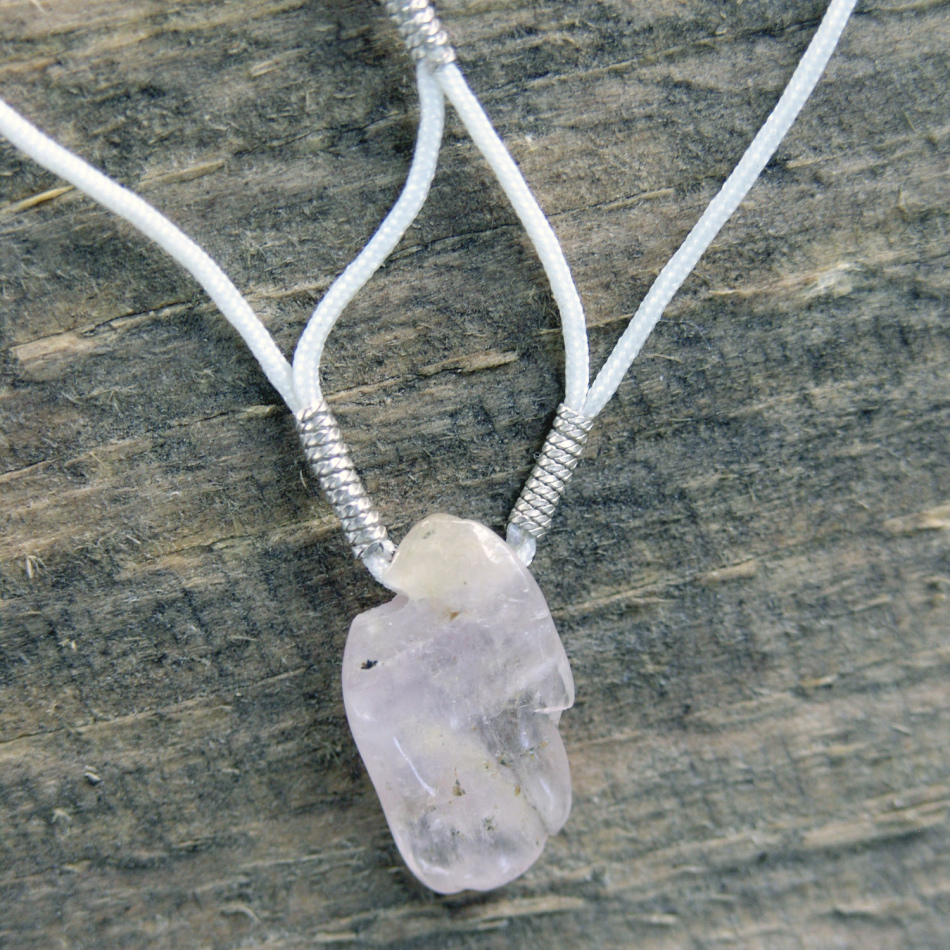 White tourmaline or achroit
White tourmaline or achroit The semi-precious white stones include: white agate, rhinestone and white opal.
Jewelry and ornamental stones can boast of the presence in their list of such white minerals as milk coral, white jasper, moonstone, white-green jade.
Blue gemstones: name, description, photo
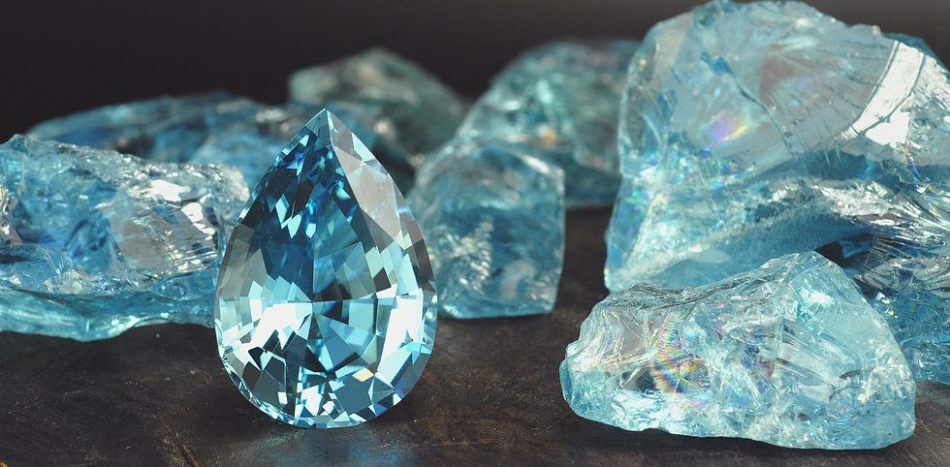 Blue gemstones
Blue gemstones Blue or cornflower blue sapphire
Only an experienced specialist will be able to distinguish these two types of mineral by eye. Blue sapphire is valued somewhat lower than cornflower blue, but it is still considered a precious stone. As for cornflower blue sapphire, it was used in ancient times only for the inlaying of royal dresses and ornaments.
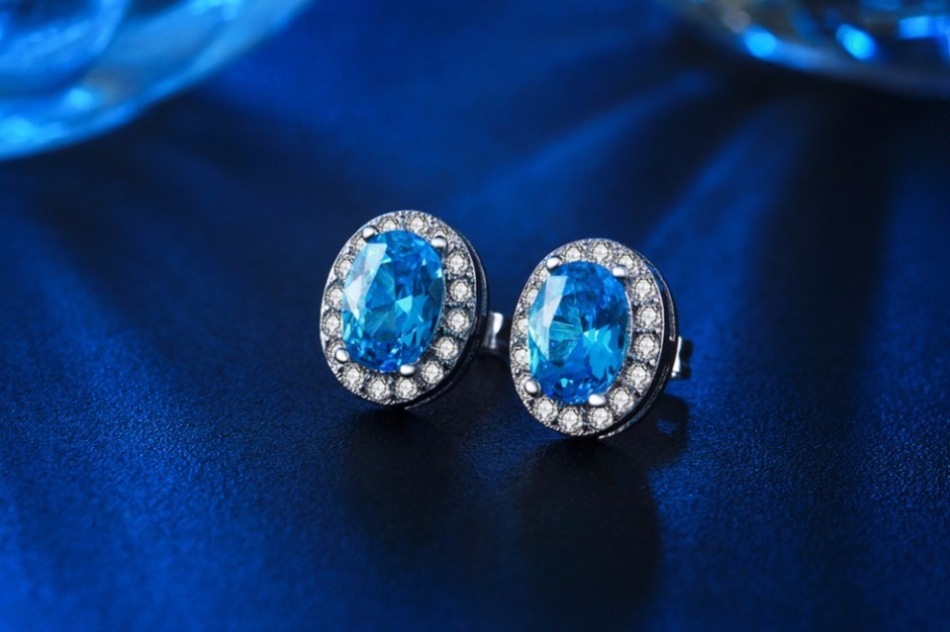 Blue sapphire
Blue sapphire 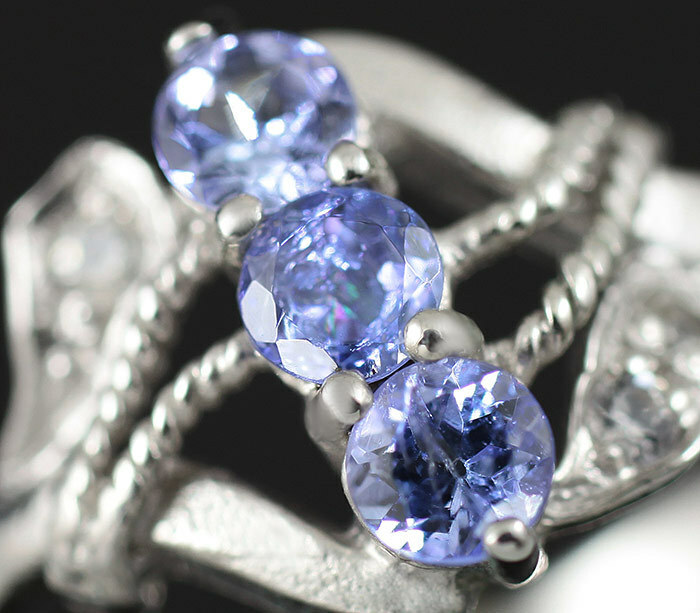 Cornflower sapphire
Cornflower sapphire Topaz
Topaz is most often found in blue, but in nature it happens in other colors - yellow, green, orange, etc. Topaz is not too expensive mineral. Most often it is framed in white precious metals - platinum, white gold. Such metals, as it were, are emphasized by its gentle radiance.
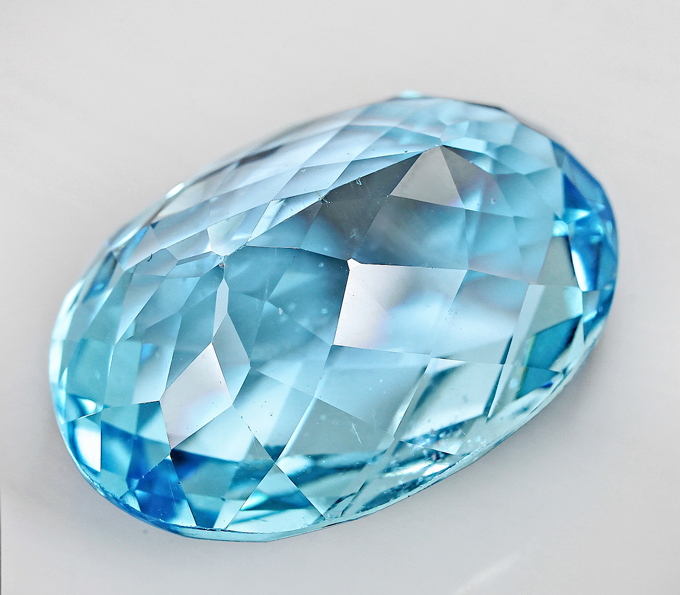 Blue topaz
Blue topaz Aquamarine
Already from the very name of the mineral, its origin and associations associated with it become clear. The marine color of this stone helps jewelers create masterpieces of blue color. Fans of aquamarine should pay attention to the fact that this mineral is quite fragile - exposure to chemicals, mechanical damage and heat treatment negatively affect its condition.
 Aquamarine
Aquamarine Blue Spinel
This coloring of the stone is extremely rare, which causes a rather high price for it. In the framed form it can be found only in exclusive creations of jewelers, which are often stored in private collections and cost tens or even hundreds of thousands of dollars.
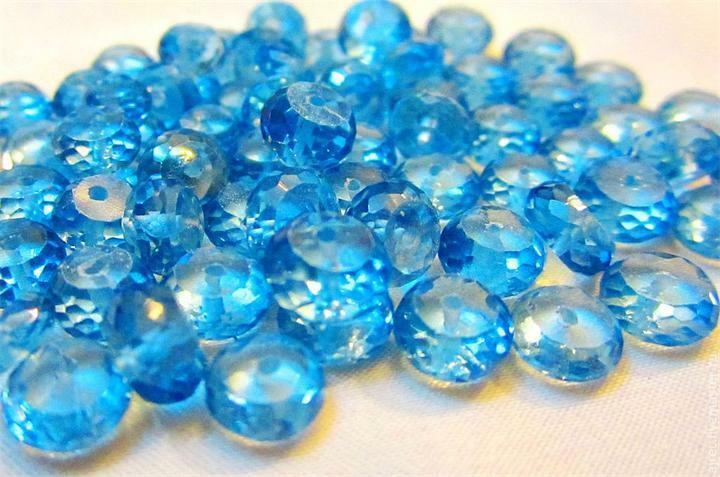 Blue Spinel
Blue Spinel To semi-precious stones of blue color are: zircon, chalcedony.
By ornamental blue stones are considered turquoise, apatite, bezoar, amazonite.
Blue gemstones: name, description, photo
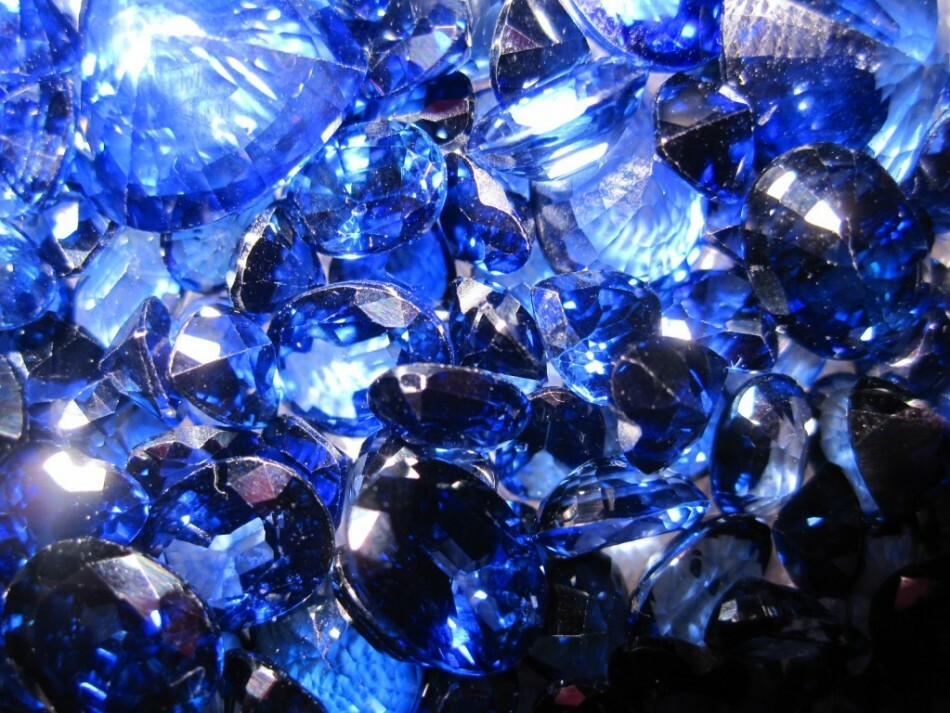 Blue gemstones
Blue gemstones Sapphire
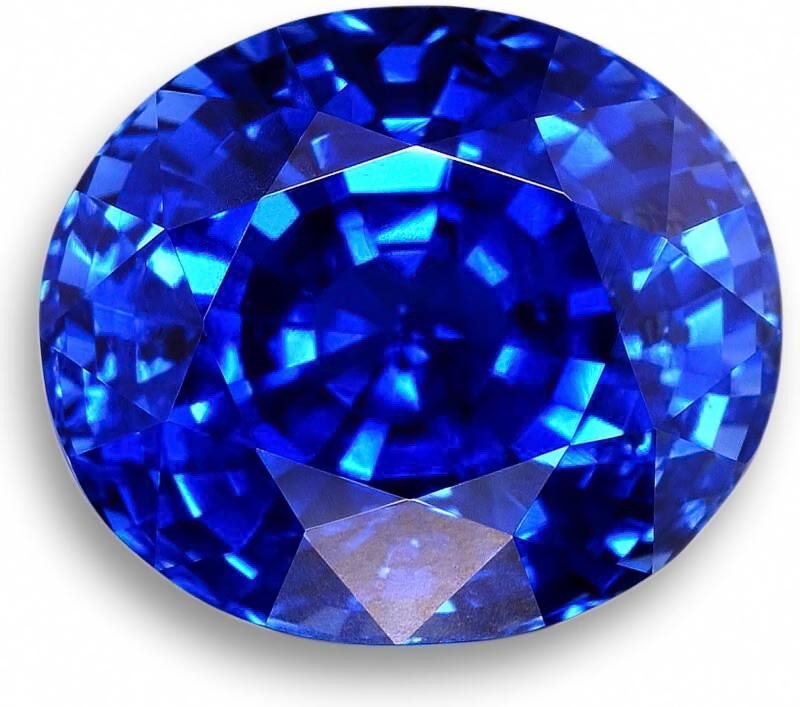 Blue sapphire
Blue sapphire Topaz
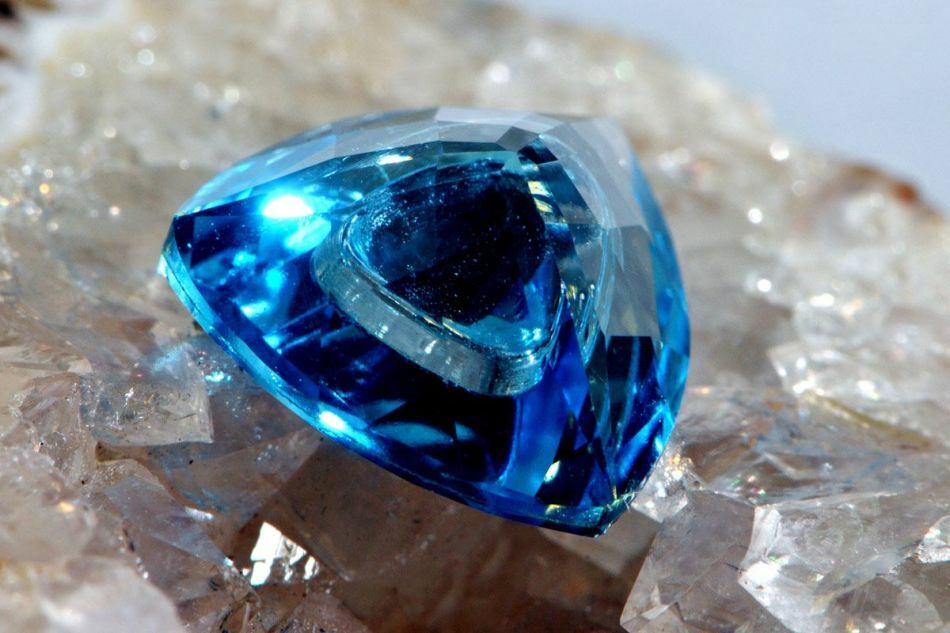 Blue topaz
Blue topaz Lapis lazuli
Lazurite is a jewel that is most often framed in yellow gold. It is believed that this mineral has strong healing and protective properties.
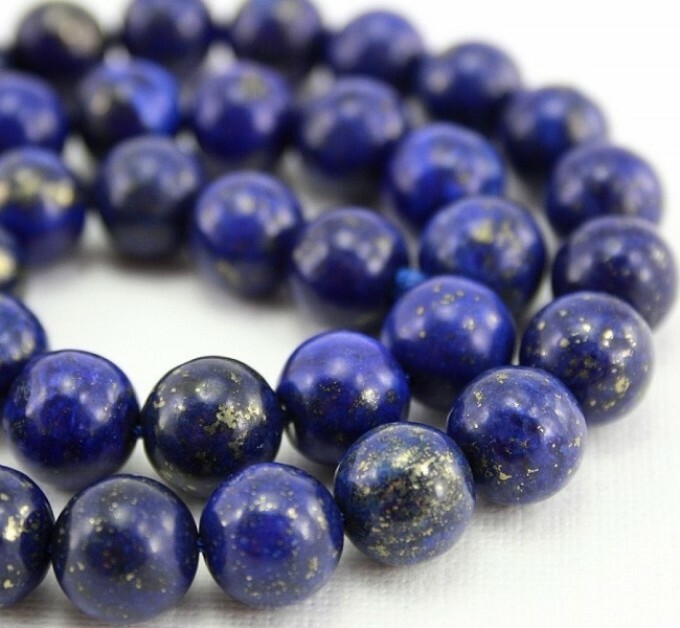 Lapis lazuli
Lapis lazuli The semi-precious stones of blue color include turquoise, the color scheme of which includes dozens of shades of blue, green and blue.
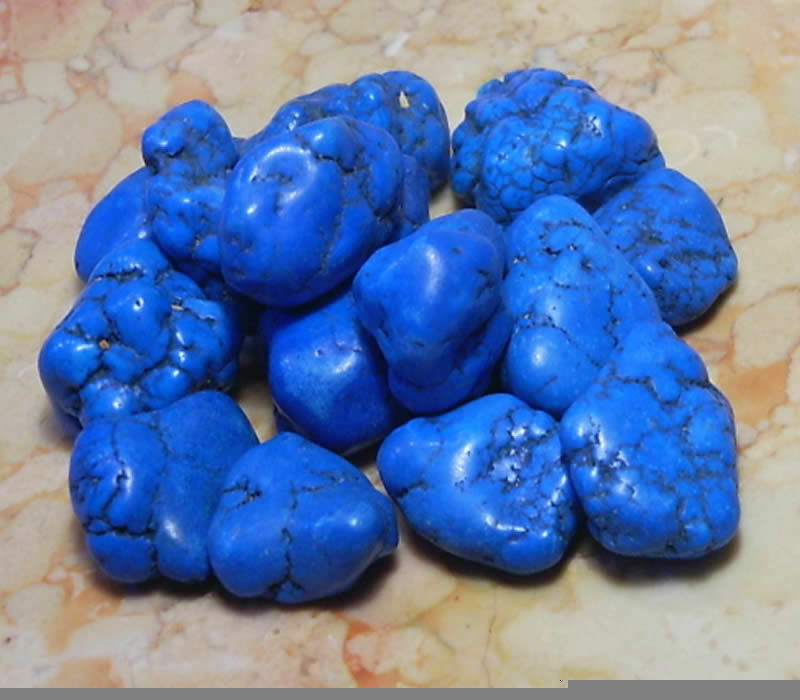 Turquoise
Turquoise Red gemstones: name, description, photo
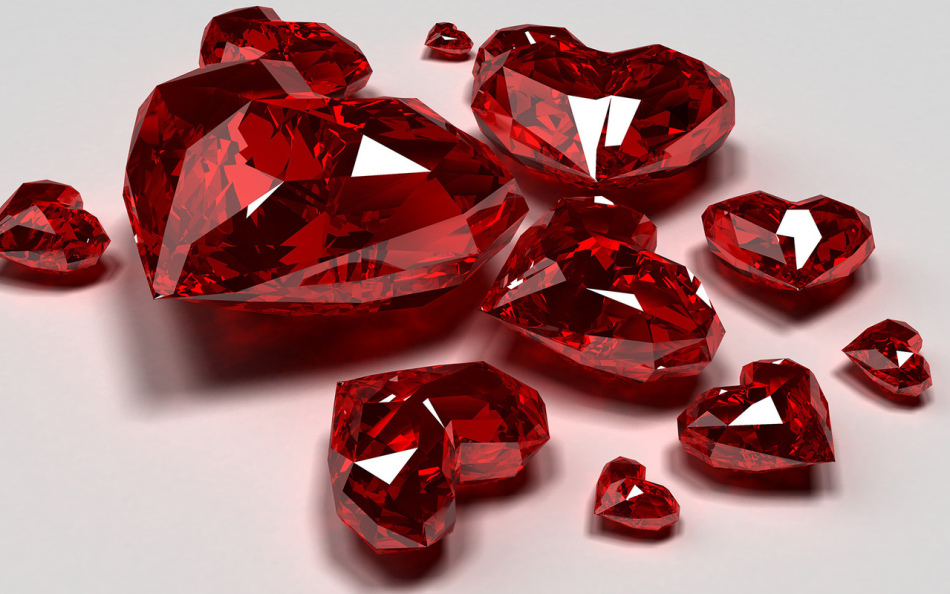 Red gems
Red gems Ruby
Perhaps, at every mention of red gems, a ruby comes to mind immediately. This, amazing beauty, the mineral is very widely used in jewelry. It is framed in various kinds of precious metals - gold, platinum, silver. The jewel, encrusted with ruby, can be quite expensive - everything will depend on the metal, as well as the quantity and size of the minerals. Since ancient times, a lot of magic and healing qualities have been attributed to rubies. This stone has always been associated with love, passion and desire.
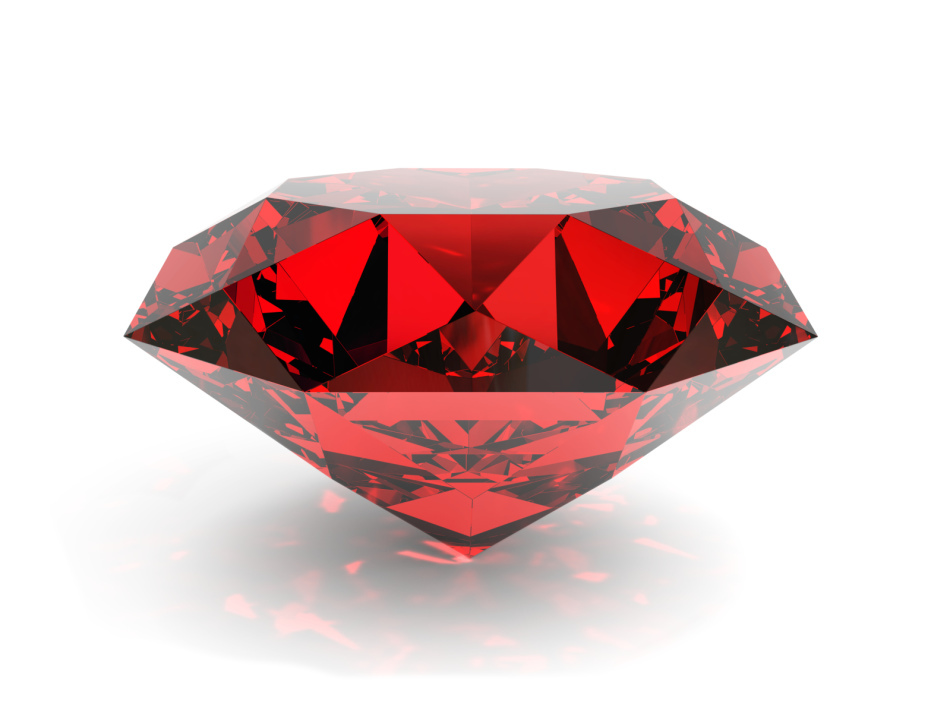 Rubin
Rubin Red tourmaline
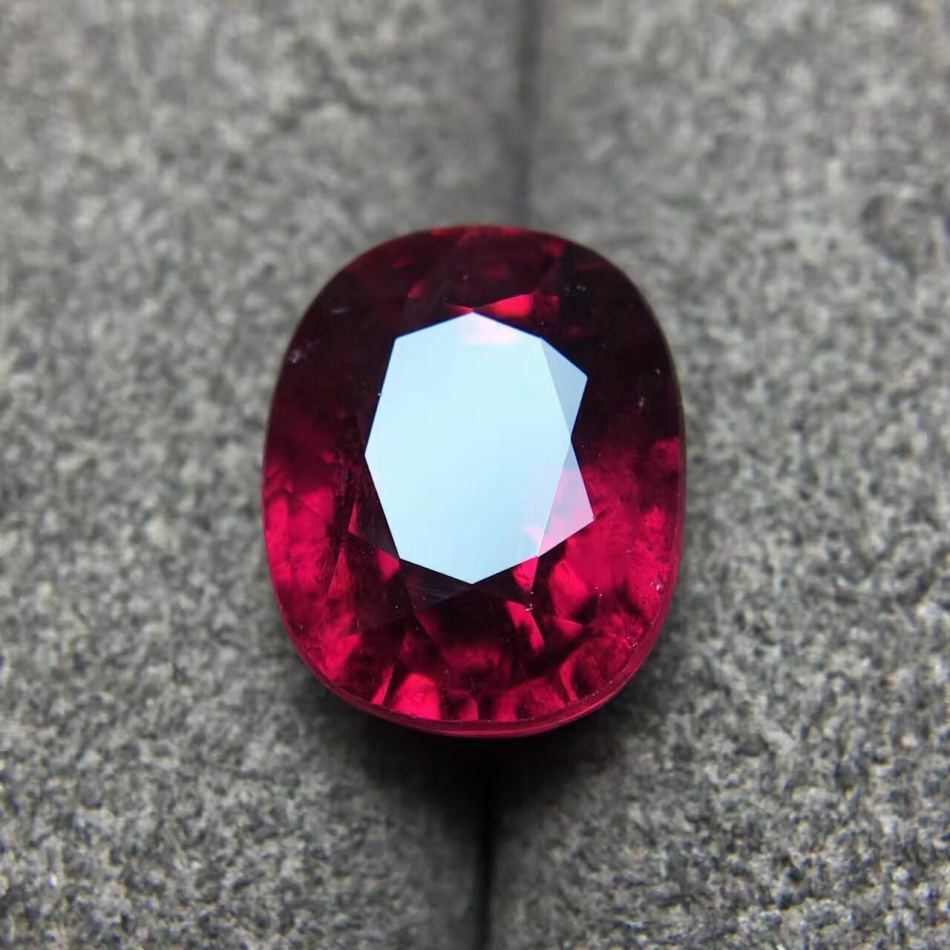 Red tourmaline
Red tourmaline Red spinel
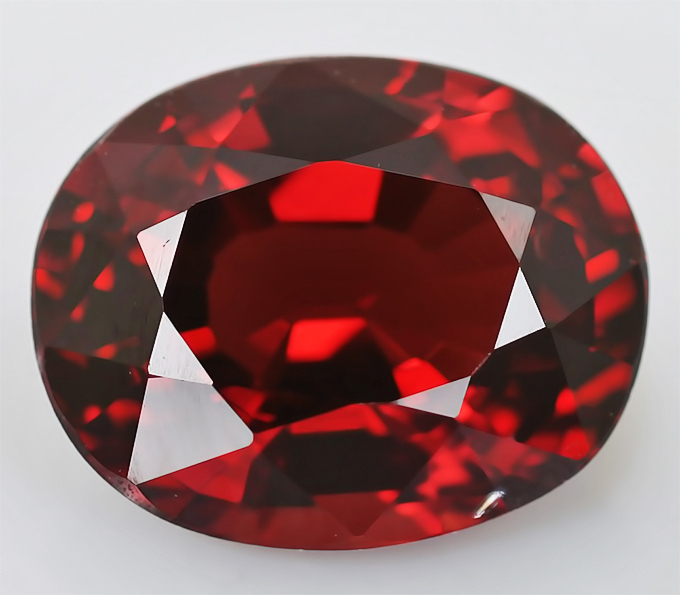 Red spinel
Red spinel The semiprecious red stones include garnet, zircon, cornelian, coral.
Pomegranate, carbuncle or pyrope
In the myths of various ancient states, there were frequent references to this mineral. It was believed that the pomegranate is able to heal from many ailments, block the action of poison and poison.
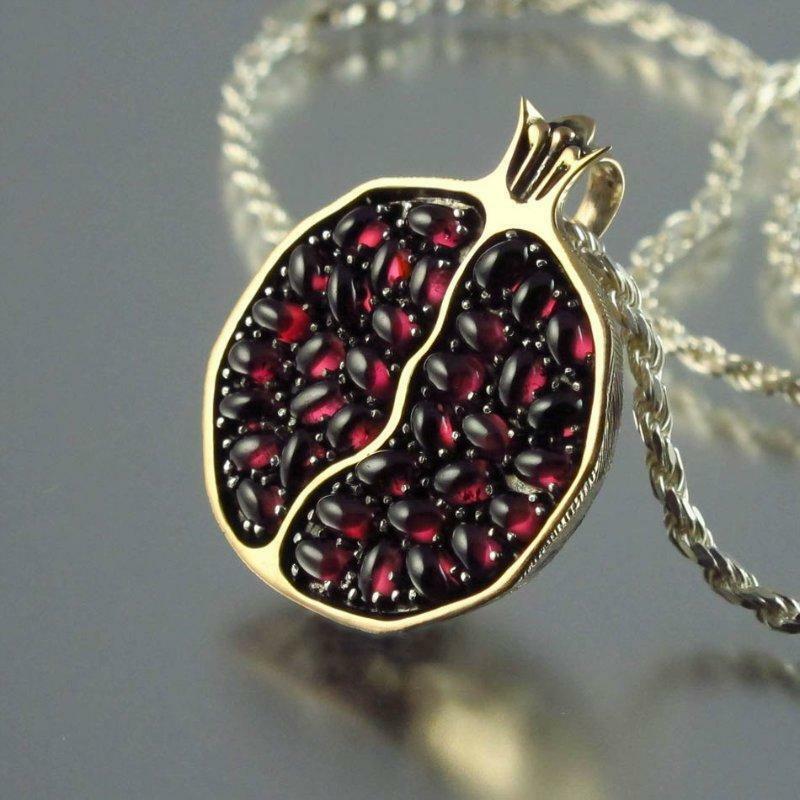 Pomegranate
Pomegranate As for the ornamental stones, the most famous representative in the red color is jasper.
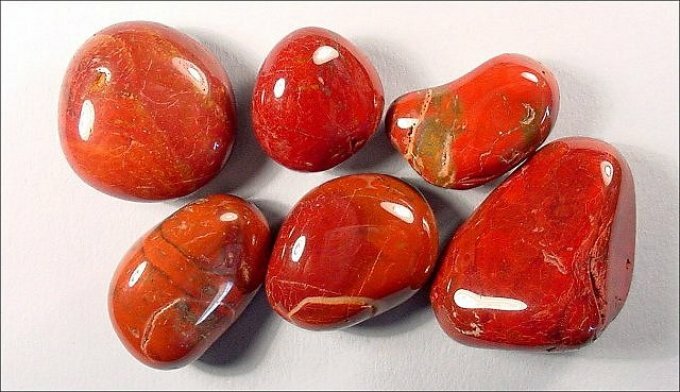 Red jasper
Red jasper Pink gemstones: name, description, photo
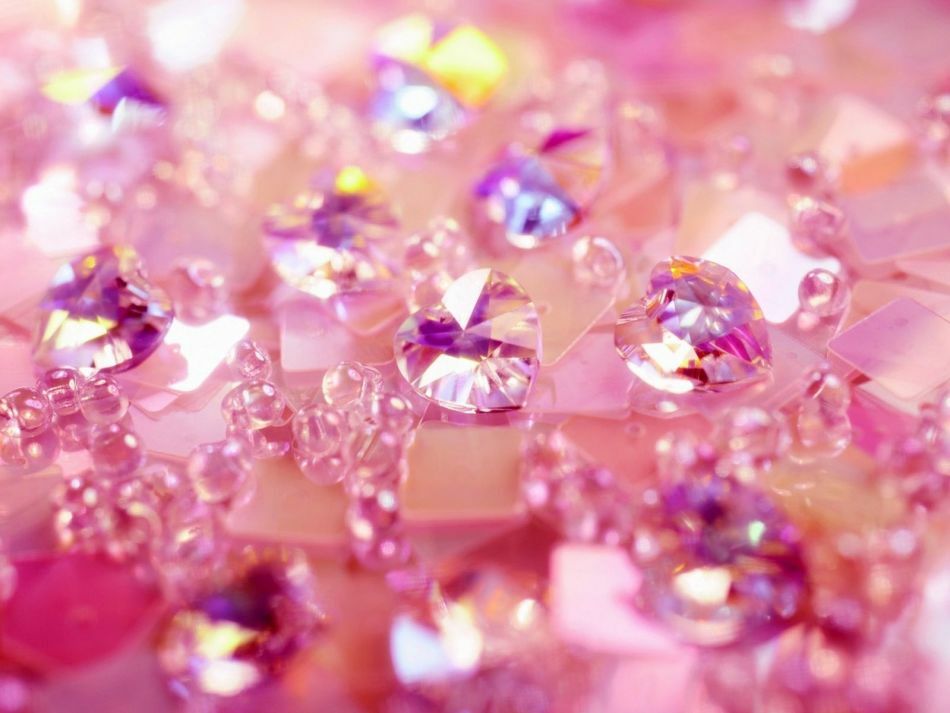 Pink gemstones
Pink gemstones Kunzit
Until recently, this gently pink gemstone was not singled out as a separate subgroup - it was simply considered one of the varieties of amethyst. However, thanks to the works of the American Kunz( whose name he was named), this mineral, on the basis of its composition, different from the amethyst, was nevertheless recognized as a completely different stone.
In the early 90's the attention of the whole public was focused on the kunzite. Such popularity was due to the Kennedy family. The fact is that the American president, on the eve of his tragic death, acquired a ring, encrusted with kunzite, by Jacqueline. But John was never destined to present a present to his beloved wife - a month before the celebration he was shot.
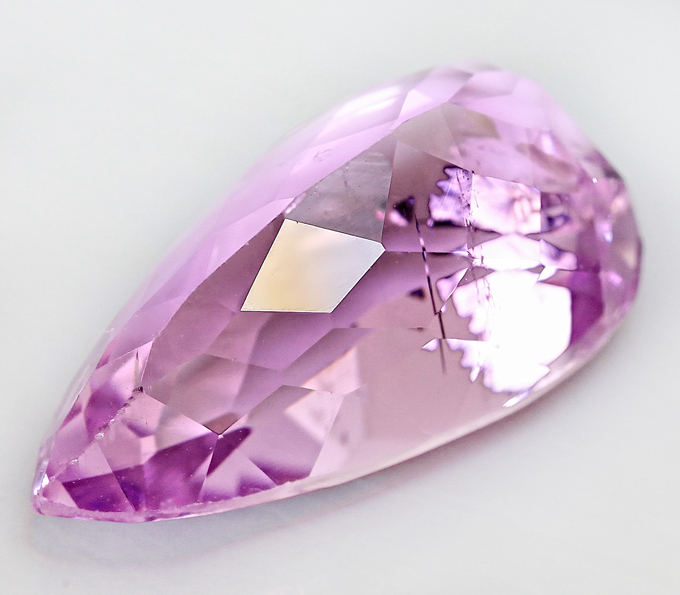 Kunzite
Kunzite Morganite or pink beryl
Morganite( in Russia sparrow) is a fairly rare mineral. Most often they decorate products in a company with diamonds.
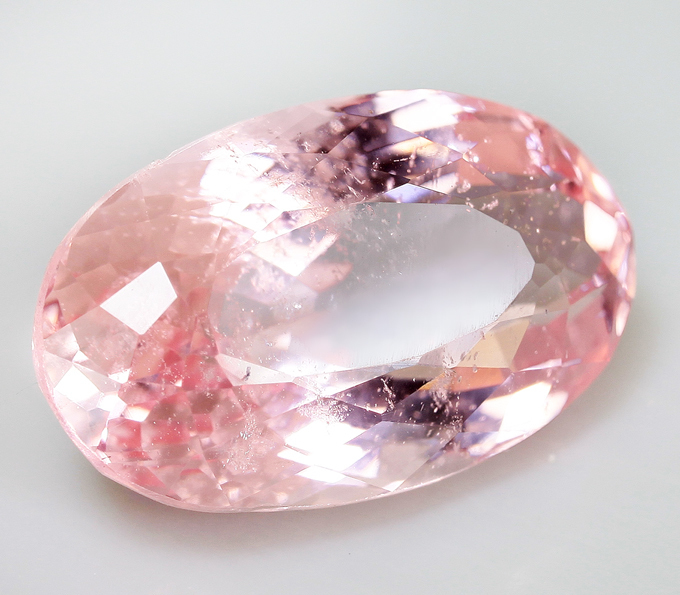 Pink beryl or morganite
Pink beryl or morganite Rubellite or pink tourmaline
Rubellite is quite inexpensive, but it is also an equally beautiful gemstone. His resemblance to ruby in ancient times played into the hands of scammers. It was this mineral that the more expensive rubies forged.
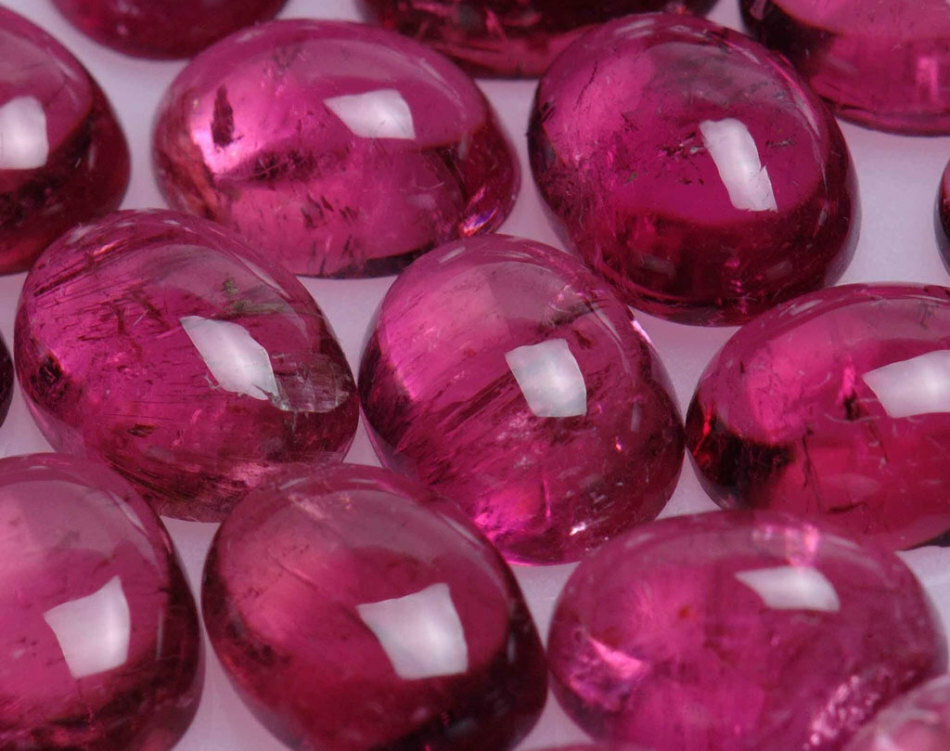 Rubellite
Rubellite To semi-precious stones of pink color are quartz, agate, corundum.
As for ornamental stones, in pink color, nature often stains jasper, coral, rhodochrosite and rhodonite.
Green gemstones: name, description, photo
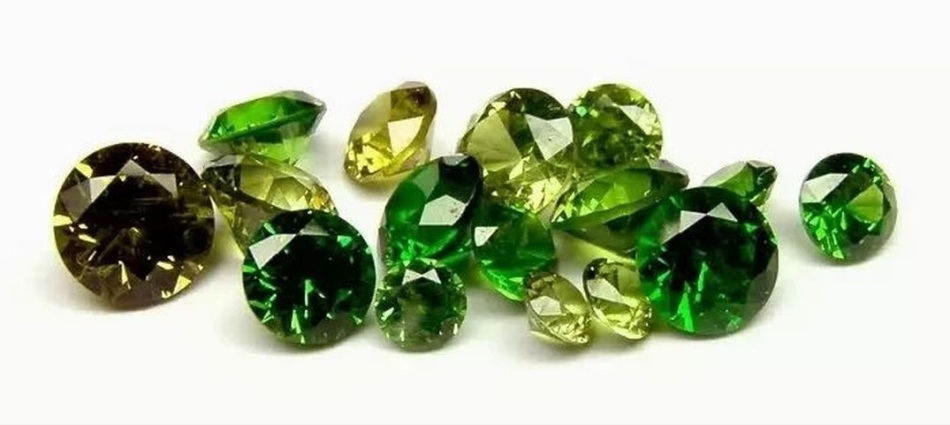 Green gemstones
Green gemstones Emerald
Naturally, the most famous green gemstone is the emerald. Few people know that in its original appearance this mineral is difficult to call beautiful - only after a qualitative cut in it you can recognize the king of green stones. Emeralds are often framed in yellow metals. In white they can be found only in a company with white gold and platinum. The price of emeralds is sometimes just fabulous - from $ 300 per carat.
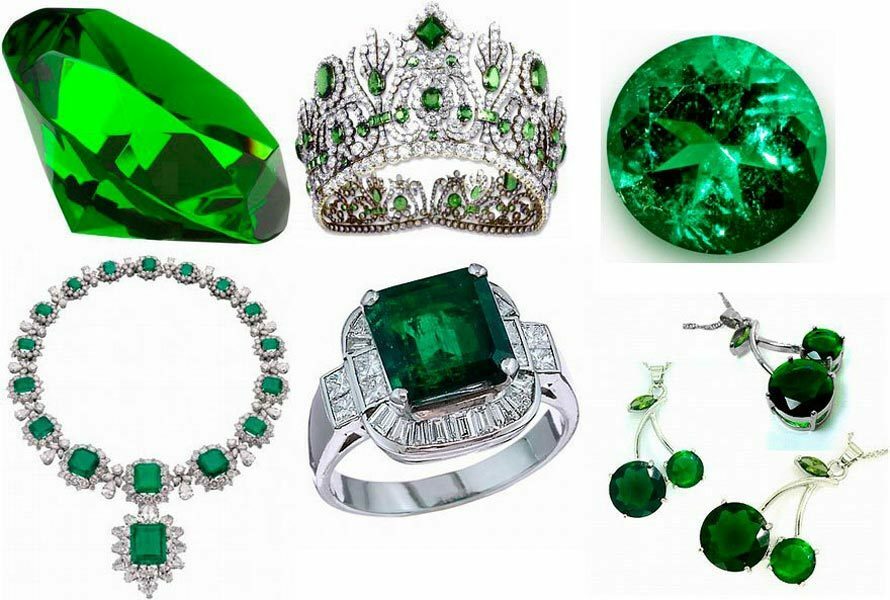 Emerald
Emerald Demantoid or green garnet
The high refractive index of the sun rays of the demantoid raises it to the level of the most regal stone - diamond. Most often green garnet is confused with an emerald, although its color, unlike the latter, is closer to the color of the grass. For one carat of this gem it will be necessary to lay out from 100 to 1000 $.
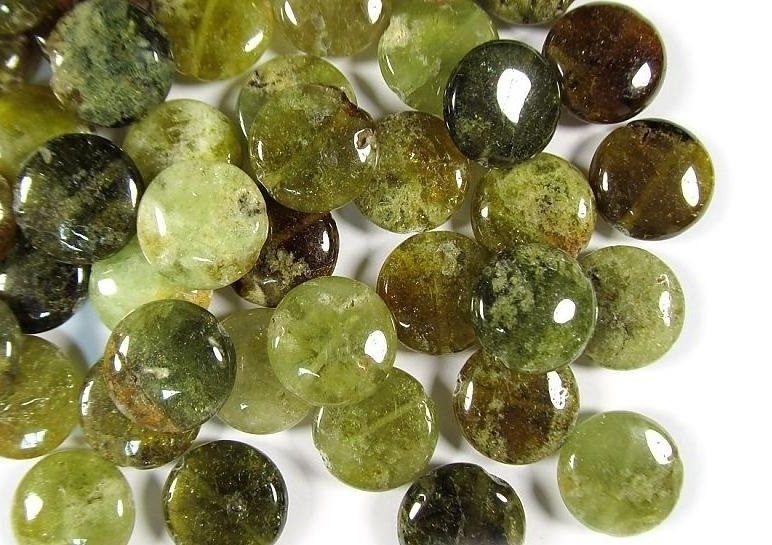 Green pomegranate
Green pomegranate Green tourmaline
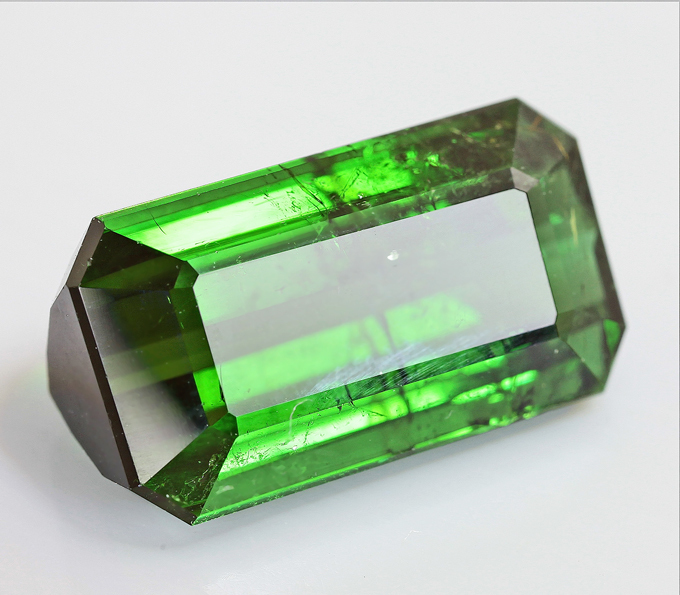 Green tourmaline
Green tourmaline Green sapphire
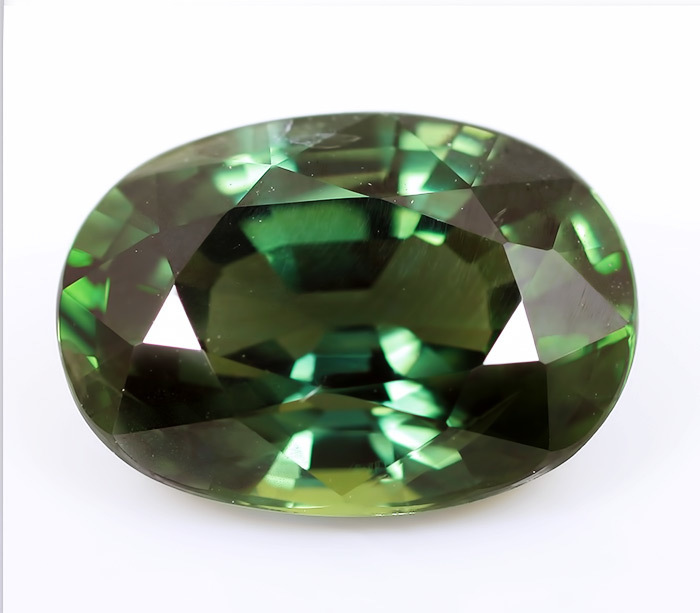 Green sapphire
Green sapphire To semi-precious stones of green color: chrysolite, aventurine, beryl, seraphinite. Decorative stones of green color are most often jasper, malachite and nephrite.
Maroon gemstones: name, description, photo
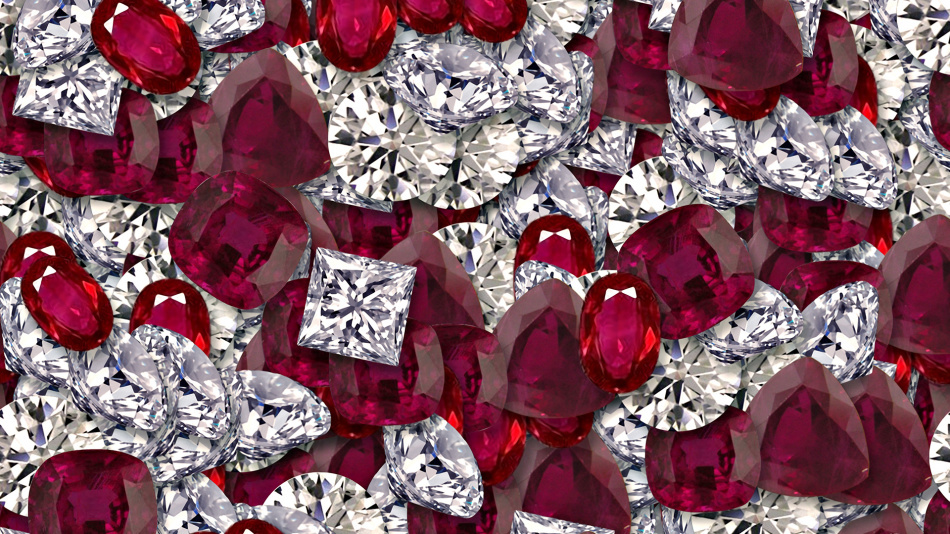 Maroon gemstones
Maroon gemstones Ruby
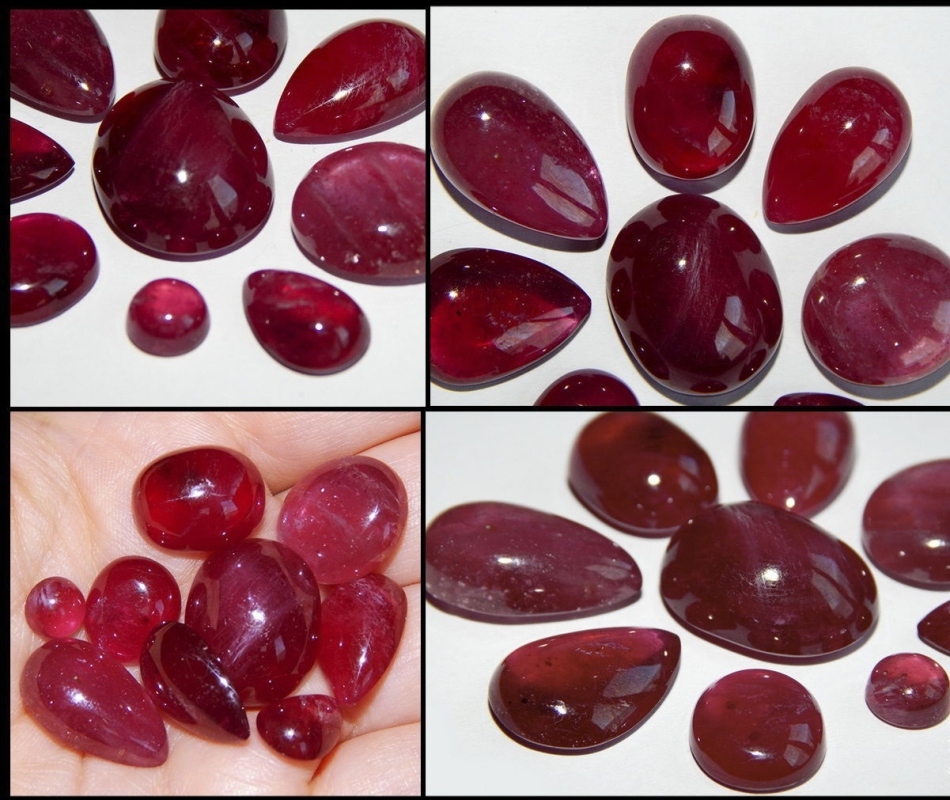 Burgundy ruby
Burgundy ruby Tourmaline
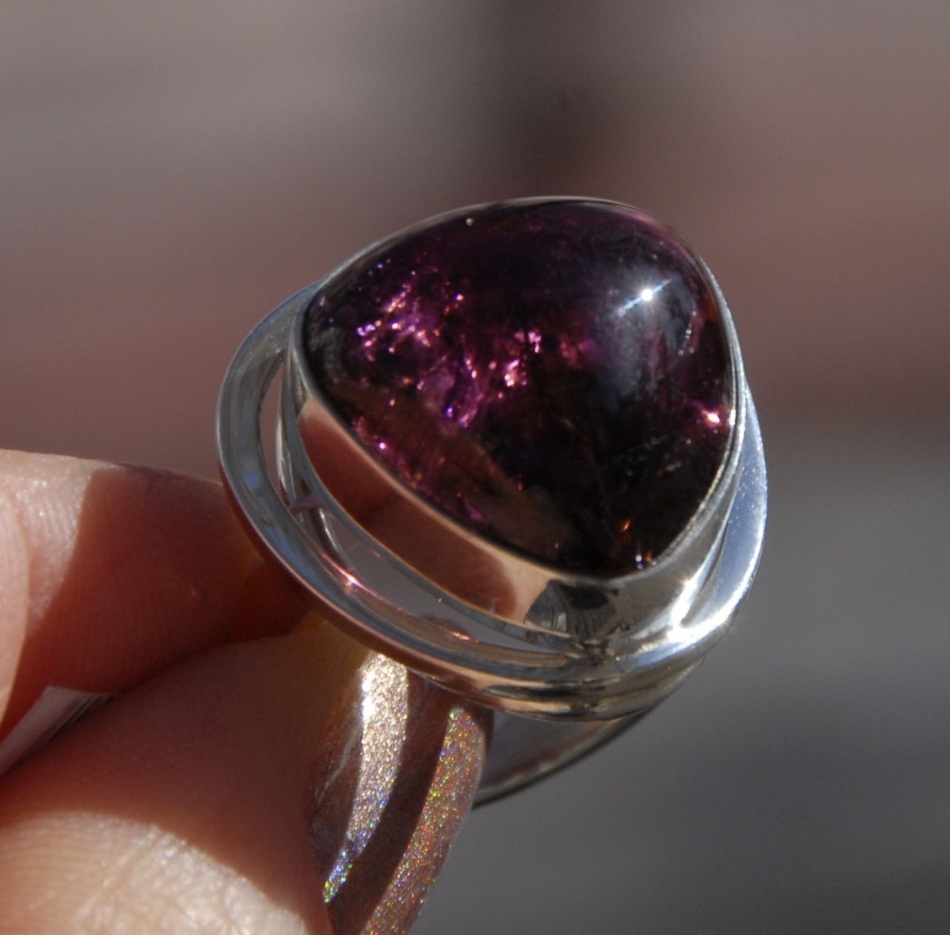 Bordea tourmaline
Bordea tourmaline Beautiful burgundy color can be a semi-precious garnet.
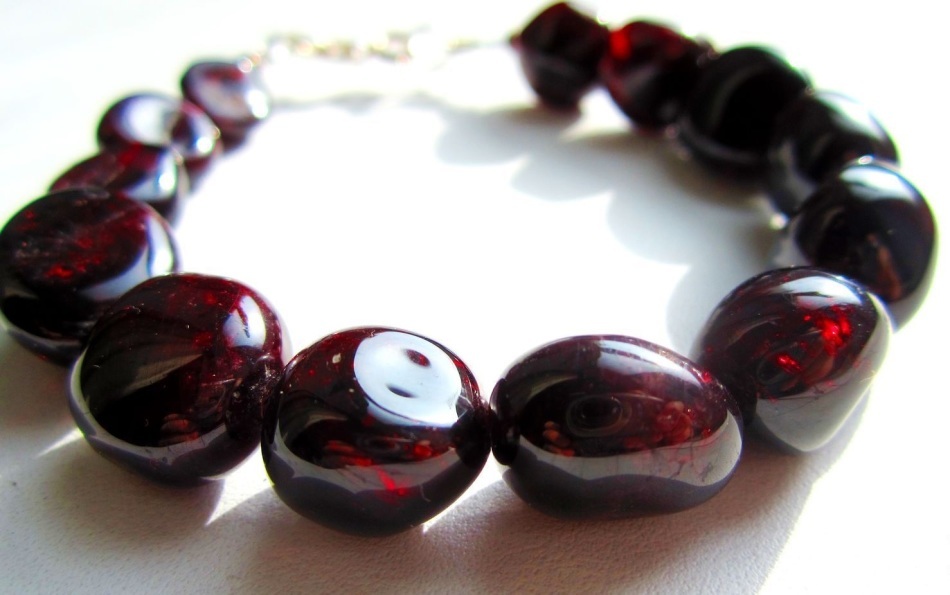 Garnet
Garnet How to distinguish a natural stone from a fake, from a glass in ornaments?
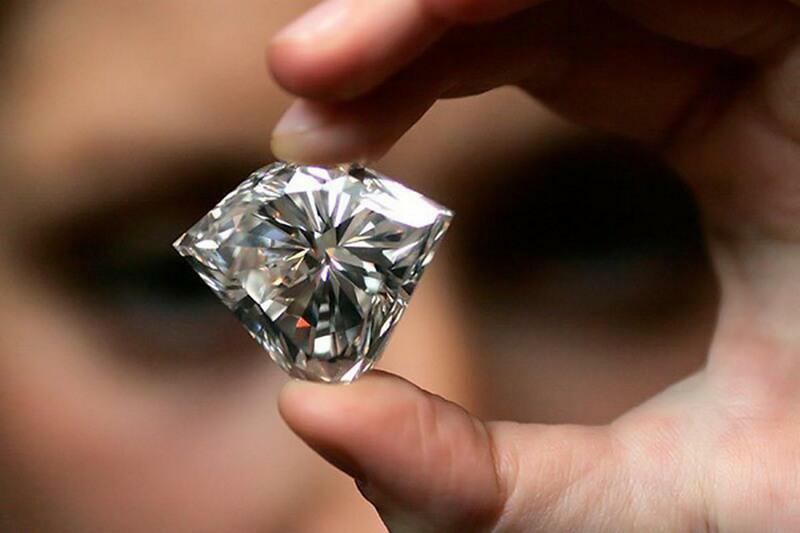 How to distinguish a real gem from a fake?
How to distinguish a real gem from a fake? For a jeweler or a high-grade appraiser, it is not difficult to identify the authenticity of a stone with the help of special tools and devices. As for the inexperienced inhabitant, it will be very difficult to distinguish a real stone from a counterfeit. In such cases, professionals recommend using the following techniques:
- A natural stone is usually much stronger than a glass or plastic counterfeit. If you hold a sharp object over it, then there should be no trace left on it. At the same time, a fake can form a scratch. But this method is relevant only when it is necessary to distinguish the hack-work from the real stone - if in the product instead of the precious stone of the higher level a natural but less expensive mineral is involved, then there is no sense in conducting such an experiment.
- Natural stones have a cold touch. If you put a stone on the tongue or attach it to your cheek, it will remain cold for a long time. If the product uses glass or plastic, the stone will heat up quickly enough.
- Natural stones grown in the bowels of the earth are rarely large, but artificial minerals created in laboratories can reach more impressive sizes.
- The color of natural stone is rarely very saturated, bright. At the same time, creating a hack of any color and hue is quite simple.
- Do not count on the fact that natural stone will cost a penny - the price per carat of a precious mineral can reach thousands and hundreds of dollars.
- When buying a product with natural stones, you can ask the seller to provide a certificate for the authenticity of the stones.
In fact, all precious minerals have absolutely different chemical and physical properties. Therefore, each of them must be individually identified.
